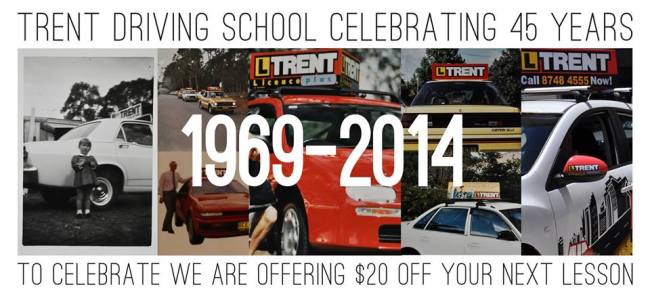
Isn’t it amazing how quickly the years go by? It constantly seems like we get past Christmas and then the next thing we know, it’s Easter and then Christmas has rolled around again.
Trent Driving school has been around for 45 years this month. Our company started out in 1969 as a family owned business with just the one Driver Trainer, 45 years later, we are still a family owned company (by that same family!), but we now have 73 Driver Trainers who service the Sydney, Blue Mountains, Illawarra and Central Coast areas.
It’s been an amazing journey. We started out doing solely driving lessons and have progressed over the years and are now RMS accredited providers of the Safer Drivers course, we do school presentations, older driver assessments and we create new Driver Trainers with providing our Cert IV course in Driving Instruction. There are many more exciting ventures coming up. Mum’s the word at moment, but stay tuned!
Now even though it is Trent Driving Schools 45th birthday, we want to give you guys a special birthday present! For the month of June, your next lesson (or your first if you are new to us) will have a $20 discount, so that’s only $60 for your next lesson* (woohoo!).
To take advantage of this awesome offer, please go to our website to book online, or you can give us a call on (02) 8748 4500.
Here’s to another successful 45 years!
* Terms and Conditions